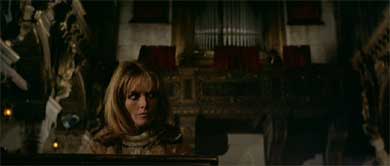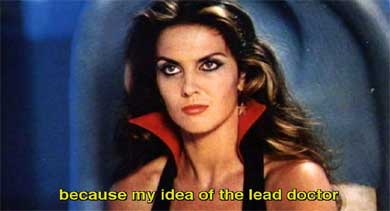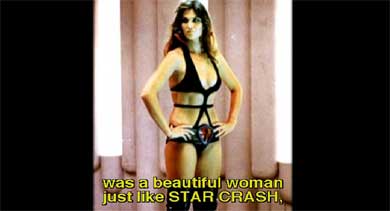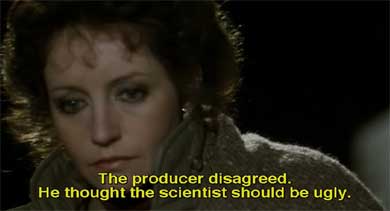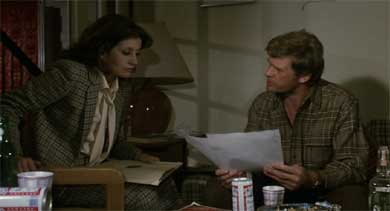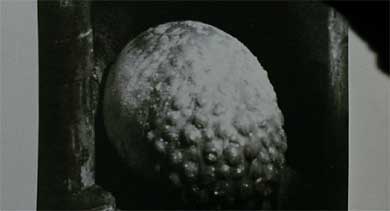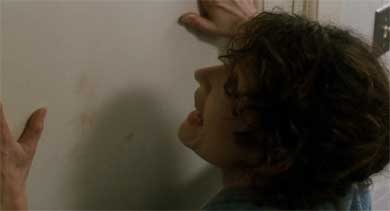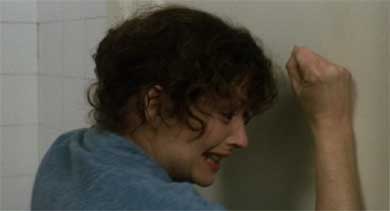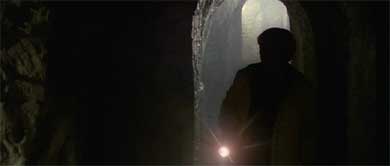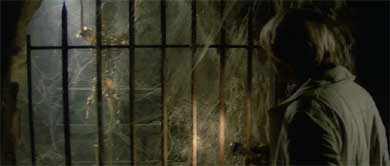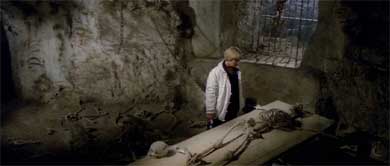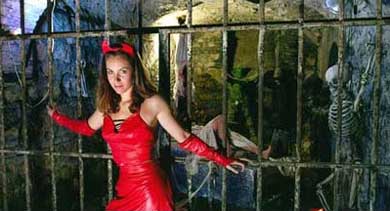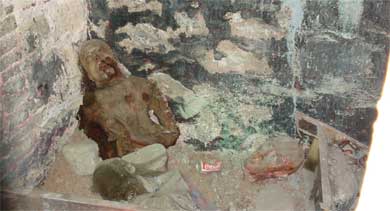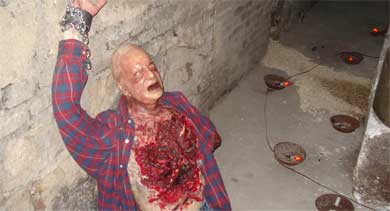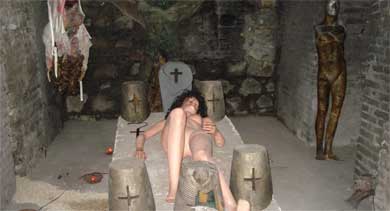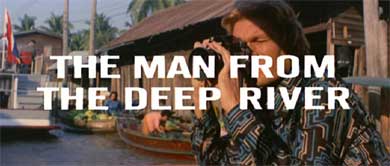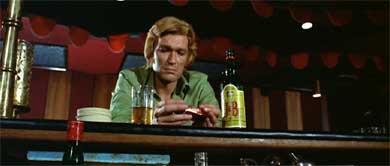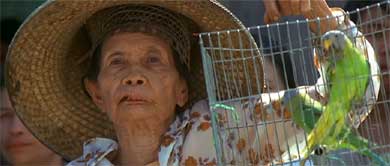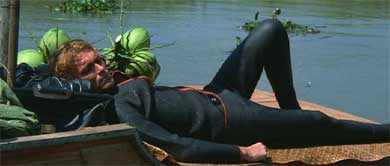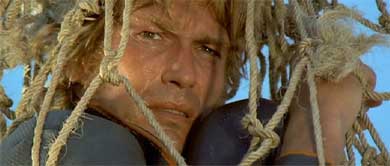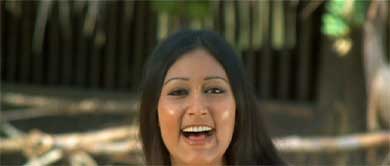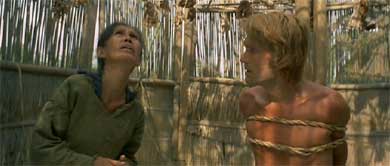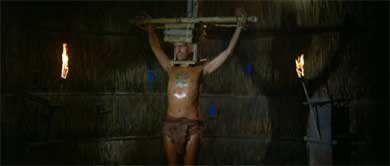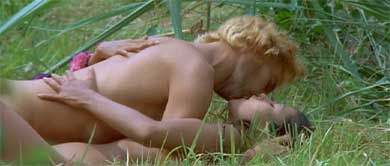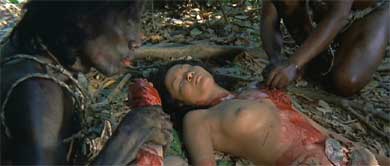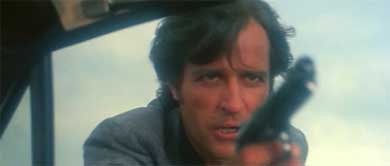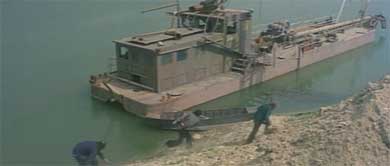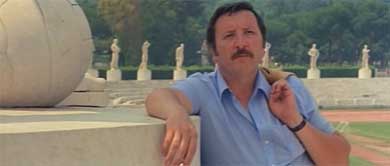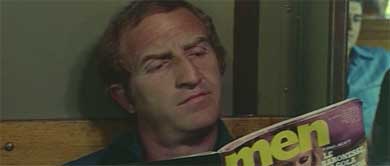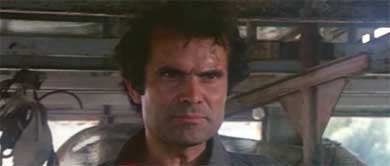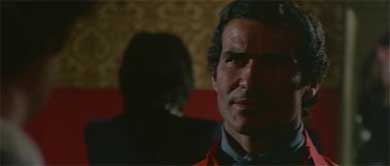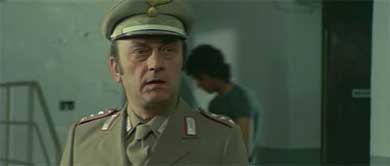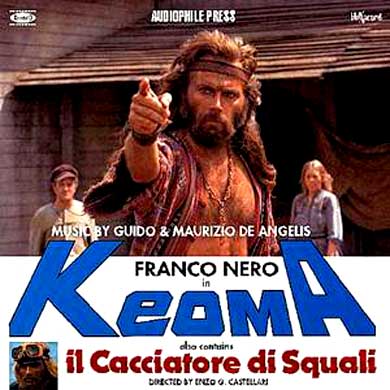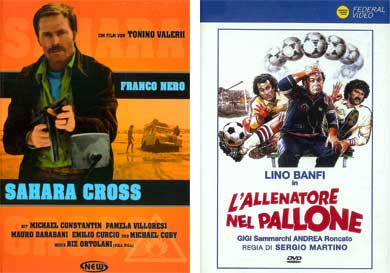Chi L'Ha Vista Morire?, 1972. Directed by Aldo Lado. With George Lazenby, Astrid Strindberg, Nicoletta Elmi, Adolfo Celi, José Quaglio.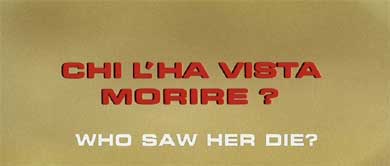
Franco (George Lazenby) is a sculptor who lives in Venice, while his estranged wife Elizabeth (Anita Strindberg) and their 8-year-old daughter Roberta (Nicoletta Elmi) live in London. Roberta visits her father and they have a wonderful time together, as he brings her along to his friends and his art dealer, the rich and powerful Serafian (Adolfo Celi). When Roberta doesn’t come home one day, after playing with other kids at a square nearby, Franco starts looking for her, but nobody knows anything. The next day she is found dead, floating in Canal Grande.
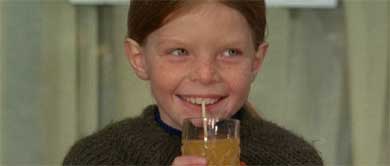 Roberta...
Roberta... ...with her father and his friends.
...with her father and his friends. In the background you can hear a child sing: "Chi L'Ha Vista Morire?"
In the background you can hear a child sing: "Chi L'Ha Vista Morire?"After the funeral Franco and Elizabeth find solace in each other, but Franco feels guilty and starts a search for answers after a friend tells him of a similar case a year before. He gets in contact with a lawyer, Bonaiuti, who represented the parents of the girl who died a year before. Bonaiuti is a suspicious man who is obvious hiding something... or someone. Franco learns that this lawyer is also familiar with some of his friend and with Serafian.
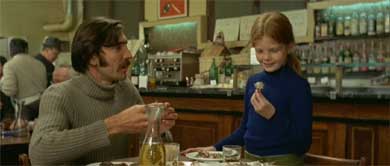
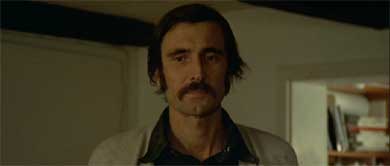 Where's Roberta?
Where's Roberta?Serafian’s assistant Ginevra contacts Franco, because she wants to tell him something important, but before they can meet she is also killed, and the trail leads back to Bonaiuti and Serafian...
 The child...
The child...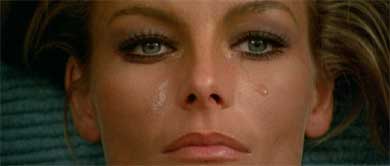 The mother...
The mother... The father...
The father...I guess with Venice as a setting it is hard not to turn your movie into one big sightseeing-film, but Aldo Lado manages to show another site of this great city. Franco’s life, and the places he visits on his search, have an authentic, local feel to them. And although parts of the film concern the upper class, a lot of scenes are set in the alleys, squares and little bars where most tourists won’t come. This adds to the believability and to the overall impact of the film.
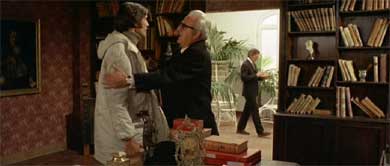 Serafian: "My dear Franco..." Bonaiuti stands in the other room.
Serafian: "My dear Franco..." Bonaiuti stands in the other room. Bonauiti and his birds.
Bonauiti and his birds.And the impact is significant, in large part to the emotional first half of the film. Both Nicoletta Elmi and George Lazenby are very good in their roles, the love and affection between father and daughter comes across as genuine. And Lado expertly handles the scenes of Roberta’s funeral and aftermath, combining Ennio Morricone’s phenomenal score with Franco and Elizabeth dealing with their loss, resulting in some very touching scenes.
This emotional basis enhances the second part of the movie, which is in a much more traditional giallo-style: everybody acts suspicious; there are brutal murders by a blacked gloved killer; there are some red harings, and a lot of subjective cinematography. Lado keeps his film well focused on Franco unraveling the mystery surrounding his daughter’s death, with a few impressive sets and some effective supporting actors, especially José Quaglio as Bonaiuti makes an impression.
 Shadows in the fog.
Shadows in the fog. And a great location...
And a great location...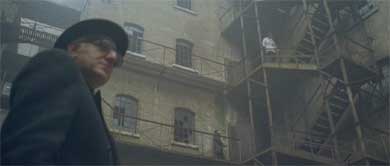 But who's following who?
But who's following who?A great addition is Ennio Morricone’s score, which is beautiful and haunting, and I think one of his best. The use of a boy’s choir works well with both the story itself, as with the images of Venice. And the scenes set at the fog-shrouded docks just look great.
Having seen three of Lado’s films, Short Night of Glass Dolls, Night Train Murders and Who saw her die?, I can say that I’m an big Aldo Lado fan. His movies are well made and intelligent and I hope more of his films will be released on dvd.
